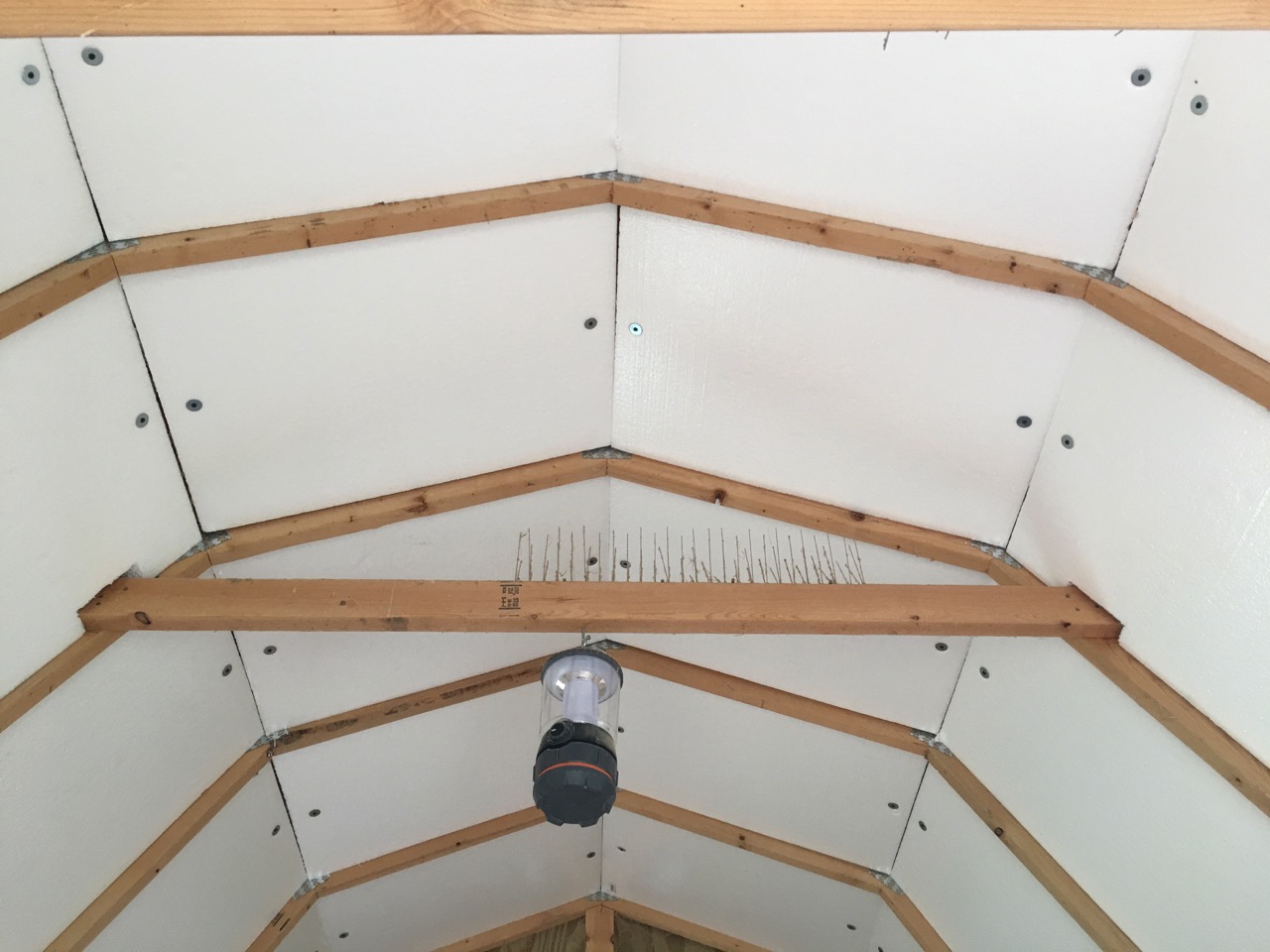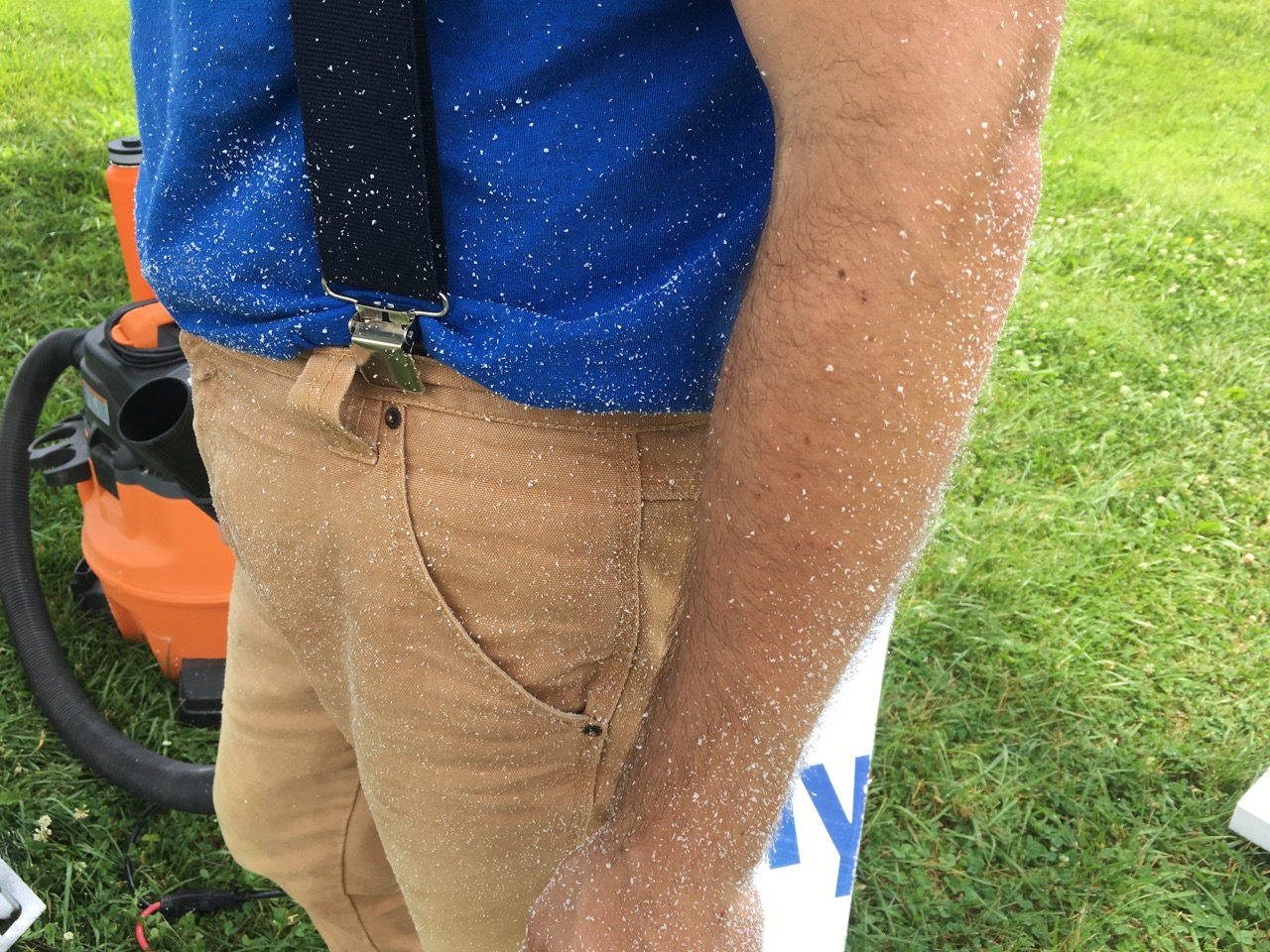
It’s hot out today. With the heat index, it’s 97 degrees. Sounds like a good day for sitting in an air-conditioned room and taking it easy, right? Yeah, right – it’s the perfect day to add some insulation to the chicken coop to help keep the ladies cool. Happy chickens lay more eggs!
As you know from reading earlier posts, we retrofitted a lofted shed as a chicken coop when we acquired our first chickens. We’ve learned a lot since then and would definitely build our own, rather than try to make a shed work, in the future; that said, the shed wasn’t built with the special features a really good chicken coop incorporates, like excellent ventilation. In addition, the metal roof combined with the very tall loft traps heat. We’ve tried to ameliorate the worst of the heat in past years by employing shade cloth, installing a fan, building a sturdy screen door, cutting in a lot of ventilation, and making sure the ladies have cool water available to them after they’re secured for the night.
One project we’ve kicked around for a while, though, is addressing the heat coming through the gambrel metal roof. Because it’s metal, we don’t really have a way of adding a ridge vent, and the heat just sits at the top of the coop. After doing our research, we decided to insulate the underside of the gambrel roof with foil-backed rigid styrofoam panels…and we started that project today. It’s par for course: every project seems to be undertaken when it’s either far too hot or cold.
Nonetheless, the task needed to be done. After picking up our 2″ polystyrene insulating panels at the local home improvement store, we set about cutting them to size. We try to avoid using these types of foam products when possible, but our research led us to conclude that these would be the most appropriate DIY solution. To our dismay, however, cutting into them unleashed a shower of foam particles all over us (thanks to the helpful breeze) and since we were already sweaty, we ended up looking like flocked Christmas trees. It was horrible. And we had to make many cuts to fit them into the underside of the roof. The cutting was definitely the worst part of the process.

Once cut, the pieces were fitted into the roof’s underside, reflective side up. The top and south-facing sides of the metal roof bask in the sun most of the day, so we expect that the reflective coating will help significantly reduce the radiant heat. Was it a fun project? No. Would we do it again? Definitely. The chickens have to sit in the coop when they lay their eggs, and we don’t want them baking while they’re in there. We think the chickens deserve a comfortable, safe place to lay their eggs and to rest at night, so we’ll continue making improvements to their coop as we identify issues.
So what have we learned so far about a chicken coop? Build it yourself, and build it as a coop from the beginning to save yourself a lot of grief; incorporate more ventilation that you think they’ll need; don’t be surprised if they don’t like and refuse to use your handcrafted nest boxes; and we would have been better off if we had chosen an asphalt shingled roof instead of metal because we could have added a ridge vent after the fact. Just a few learnings there!
